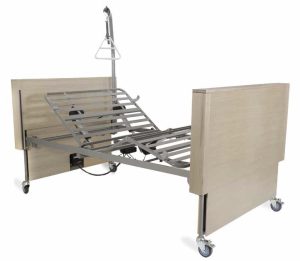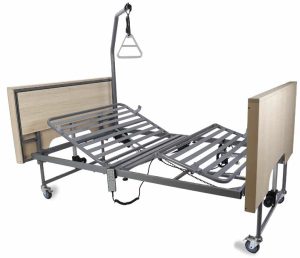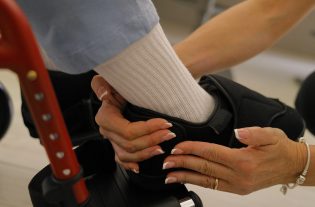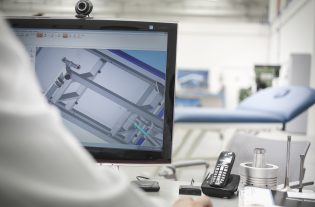In a healthcare system that is increasingly focused on the quality of care and patient safety, the hospital bed can no longer be seen as just another piece of furniture. It is, in every respect, a clinical tool. Every day, in nursing homes, long-term care facilities, and private homes, healthcare professionals and caregivers must deal with the potential risks posed by the bed itself: accidental entrapment, falls, compressions, instability. These are all situations that endanger not only patient health, but also the well-being of caregivers and the safety standards of care facilities.
The Hidden Risks of Unsafe Beds
 Beds designed without up-to-date safety standards often feature gaps that are too wide between the side rails and the mattress, or poorly calibrated movable parts. If the space between side protections exceeds 12 cm, there’s a real risk of head entrapment and suffocation. Gaps smaller than 2.5 cm between moving parts can result in finger injuries. Falls remain one of the leading causes of preventable harm in elderly patients — particularly when bed rails are too short or poorly secured.
Beds designed without up-to-date safety standards often feature gaps that are too wide between the side rails and the mattress, or poorly calibrated movable parts. If the space between side protections exceeds 12 cm, there’s a real risk of head entrapment and suffocation. Gaps smaller than 2.5 cm between moving parts can result in finger injuries. Falls remain one of the leading causes of preventable harm in elderly patients — particularly when bed rails are too short or poorly secured.
This is why European regulations (such as UNI CEI EN 60601-2-52) define strict parameters for bed dimensions and safety features. But complying with regulations alone is not enough: beds must be “suitable for every body” — from smaller patients to those with larger builds — and “designed for everyday use”, meaning they must be durable, easy to operate, and capable of supporting patients throughout every stage of their daily routine.
Mopedia Magnolia: Safety and Comfort Tailored to Every Need
This is the principle behind Mopedia Magnolia, a new line of electric orthopedic beds designed to deliver uncompromising safety, comfort, and versatility — whether at home or in a healthcare setting.
Each Magnolia bed is equipped with independent motors, allowing smooth and precise adjustments for both vertical height and the positioning of the backrest and leg sections. Even in emergencies, an integrated battery-powered lowering system enables the bed to return to a horizontal position, ensuring continued safety in the event of a power outage.
 The Ultralow model, with a lowered frame and height adjustment from 7 to 65 cm, is ideal for patients with Alzheimer’s disease or those at high risk of falling, significantly reducing the likelihood of injury.
The Ultralow model, with a lowered frame and height adjustment from 7 to 65 cm, is ideal for patients with Alzheimer’s disease or those at high risk of falling, significantly reducing the likelihood of injury.
The Magnolia 120, with an extended width of 120 cm, offers enhanced freedom of movement and superior stability thanks to its sturdy steel frame — an ideal solution for long-term care facilities and home assistance.
The Magnolia 120 HD is specifically designed for patients with a larger body type, supporting a maximum weight of up to 325 kg while maintaining exceptional structural strength.
Finally, the Magnolia Lux is an all-in-one solution for facilities seeking the perfect blend of ergonomics, modern design, and maximum hygiene. With its pantograph lifting system and central braking bar, it guarantees operational efficiency and outstanding comfort.
All Mopedia Magnolia beds comply with the MDR 2017/745 Regulation and meet the UNI CEI EN 60601-2-52 standard. They are designed with international human body proportions in mind, with the goal of dramatically reducing risks of entrapment, falls, or compression.
An Everyday Act of Care
Choosing a safe bed is not just a technical decision — it is a daily gesture of respect for the patient, protection for the caregiver, and responsibility for care facility managers. A well-designed bed reduces risks, improves comfort, facilitates care, and builds trust.
That’s why now more than ever, it’s essential to invest in beds that are truly “suitable for every body, designed for everyday use.”
Safety starts here.










